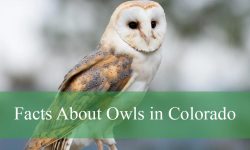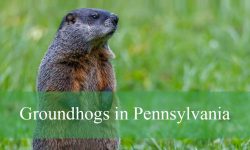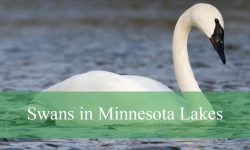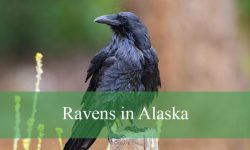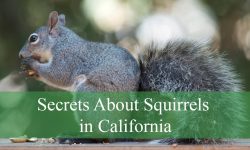Georgia is home to a diverse range of avian species, making it a prime location for birdwatching enthusiasts. Birds in Georgia thrive in the state’s varied habitats, from lush forests to expansive wetlands and coastal regions.
Whether you’re interested in observing the vibrant migration patterns or the unique resident species, birds in Georgia offer an exciting array of opportunities for both novice and experienced birders.
The state’s rich biodiversity ensures that every outing can reveal something new and fascinating about the birds in Georgia.
Different Types of Birds in Georgia
Northern Mockingbird
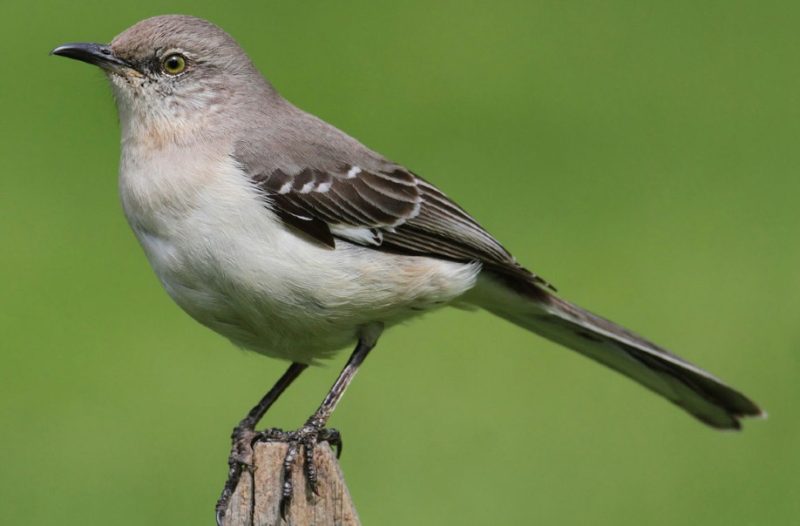
The Northern Mockingbird is a familiar sight across North America, recognized by its greyish-brown upperparts, paler underside, and distinctive long tail. Often seen singing from treetops or fences, this bird’s remarkable ability to mimic other birds’ songs earned it the name Turdus polyglottos in Carl Linnaeus’s 1758 classification.
It typically feeds on insects, fruits, berries, and seeds, and will also scavenge for food scraps. With its beautiful song and striking plumage, the Northern Mockingbird plays a significant role in its environment.
White-Breasted Nuthatch
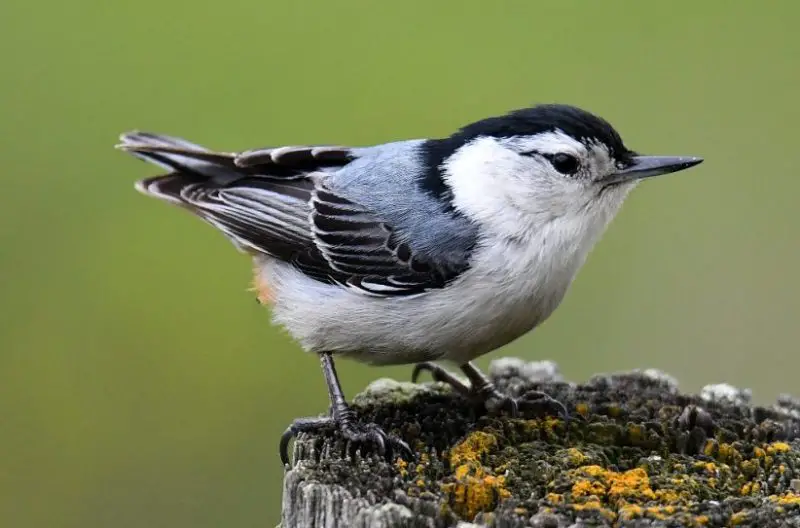
The White-breasted Nuthatch is a medium-sized bird, about 15.5 cm long, from the nuthatch family Sittidae. Males feature light blue-grey upperparts with a black crown and nape, while females have a dark grey crown.
Their whitish underparts show a reddish tinge on the sides, and they have a short, stout bill. This bird mainly feeds on insects but also consumes seeds, nuts, and berries. Preferring open woodlands, it climbs trees to forage and nests in bark crevices.
Carolina Chickadee
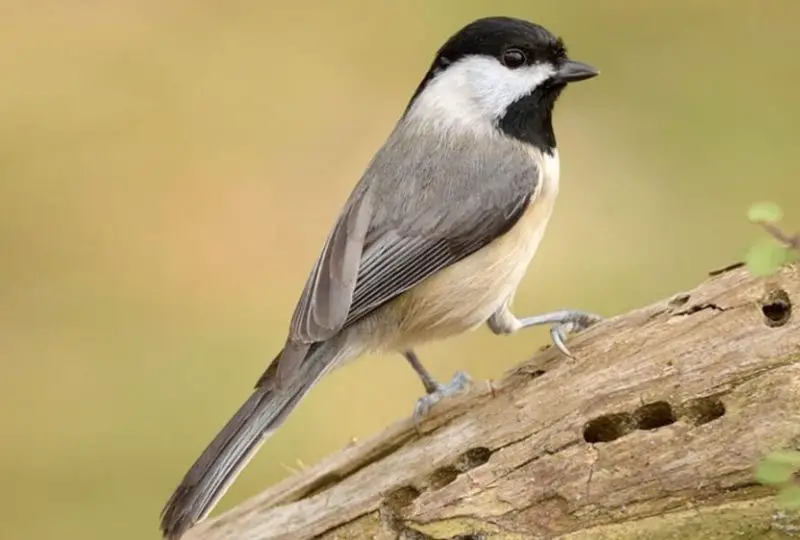
The Carolina Chickadee is a small bird from the tit family, Paridae, notable for its black cap, white cheeks, and gray-brown back. Its distinctive “chick-a-dee” call makes it easy to identify.
Found throughout North America in wooded areas near open fields or water sources, this bird primarily feeds on insects like caterpillars but will also visit backyard feeders for suet during winter.
The species is classified under the genus Poecile, distinguishing it from others due to genetic and morphological differences.
Tufted Titmouse
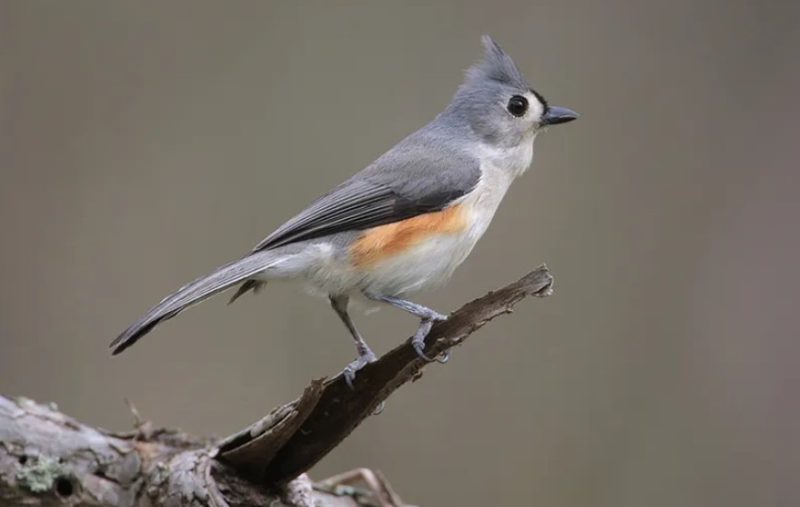
The Tufted Titmouse is a small, lively songbird found across North America. Recognizable by its white eye feathers, grey-brown wings, and pale tan underside, it also sports a distinctive black crest on its head. Males feature a pinkish breast, especially visible in spring when they sing from high perches.
These birds are fond of sunflower seeds and suet at feeders, and they also hunt insects in summer. Often seen in mixed flocks with nuthatches and woodpeckers, Tufted Titmice are social and active year-round.
Eastern Bluebird
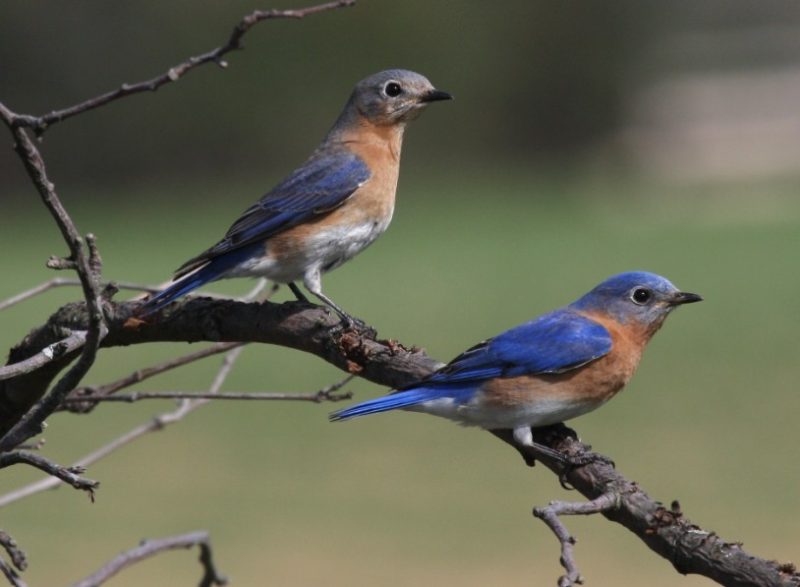
The Eastern Bluebird is a charming, small migratory thrush found in open woodlands, farms, and orchards throughout North America. Males are easily identified by their vivid blue breeding plumage. Their melodious songs include notes like “jeew,” “chair-wi,” and “chili WEEW wewidoo.”
Declared the state bird of Missouri in 1927, the Eastern Bluebird is not only visually appealing but also beneficial to farmers by controlling insect pests. They nest in cavities, and providing nesting boxes supports their population. With their vibrant colors and sweet songs, Eastern Bluebirds are cherished across the globe.
Eastern Towhee
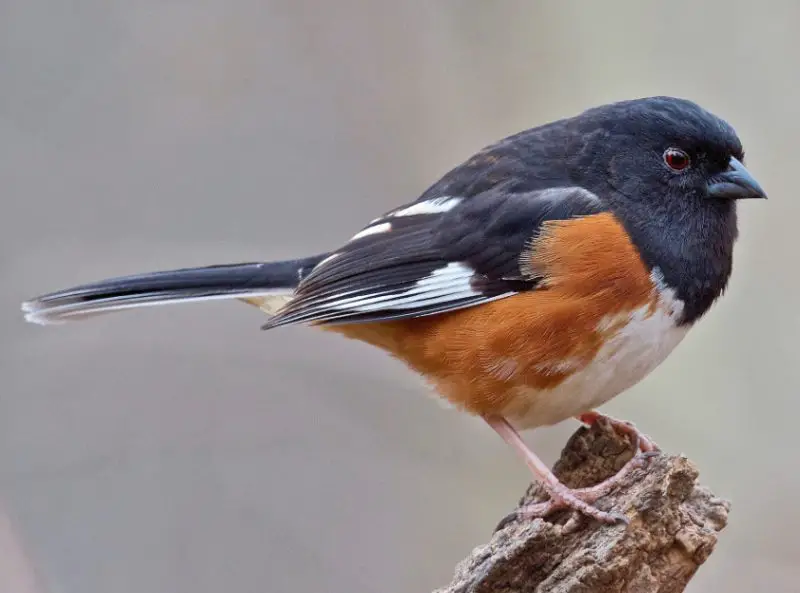
The Eastern Towhee is a striking New World sparrow found in brushy areas across eastern North America. Characterized by its black and white markings with chestnut brown underparts, it nests low in bushes or on the ground beneath shrubs.
Northern Towhees migrate south for winter. Recent debates in taxonomy question if it should be considered a separate species or grouped with the Spotted Towhee as the Rufous-sided Towhee. Known for its lively personality, this bird often hops around in search of insects, fruits, and seeds.
Carolina Wren
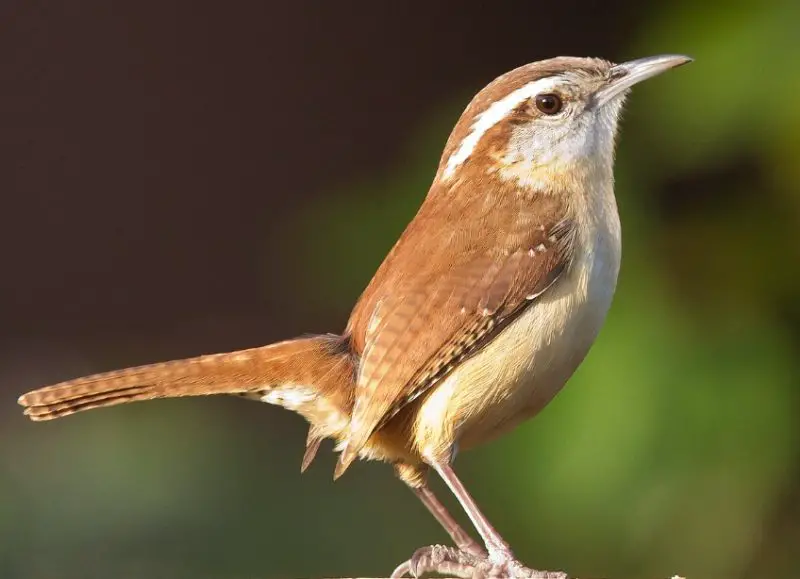
The Carolina Wren (Thryothorus ludovicianus) is a lively bird native to the eastern United States, southern Ontario, and northeast Mexico. This medium-sized wren thrives in dense shrubbery and thickets near open areas like gardens and woodland edges. It’s highly adaptable, nesting in various sites from tree cavities to manmade boxes.
The Carolina Wren’s diet mainly consists of insects, spiders, and other invertebrates, foraged on the ground or among vegetation. Known for its cheerful morning song, the male produces a distinctive series of loud whistles and trills.
Pine Warbler
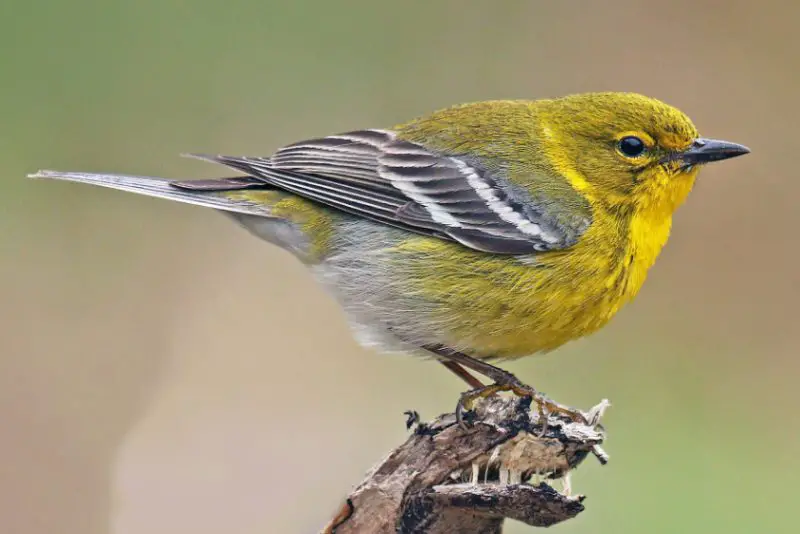
The Pine Warbler is a small songbird in the New World Warbler family, known for its olive-brown upperparts and white belly. Distinctive features include white wing bars, dark legs, and yellowish ‘spectacles’ around its eyes. Adult males boast bright yellow throats and breasts, while females and immatures are less vivid but share similar traits.
Found in pine forests across North America during summer, these warblers migrate south for winter. They primarily feed on insects and spiders, occasionally consuming fruits like blueberries when needed. Their vibrant plumage and ecological roles make them a notable part of their habitat.
Mourning Dove
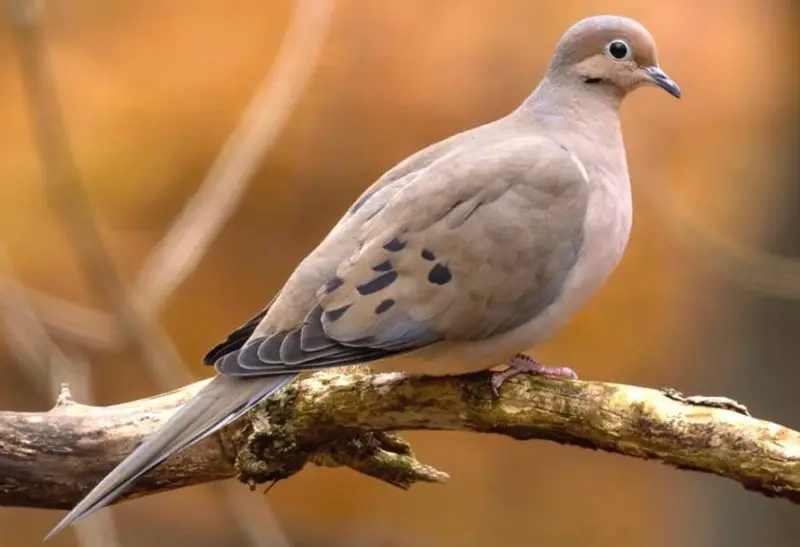
The Mourning Dove is a stunning bird with its elegant gray and brown plumage and white-tipped wings. Its long, slender tail adds grace to its flight. Commonly seen across North America, this bird frequents gardens and open fields year-round.
Known for its gentle cooing, the Mourning Dove symbolizes peace and serenity. It feeds primarily on grains like wheat and millet, which also support wildlife such as foxes and raccoons. Its soft, melodious calls are a cherished part of summer evenings.
Red-bellied woodpecker
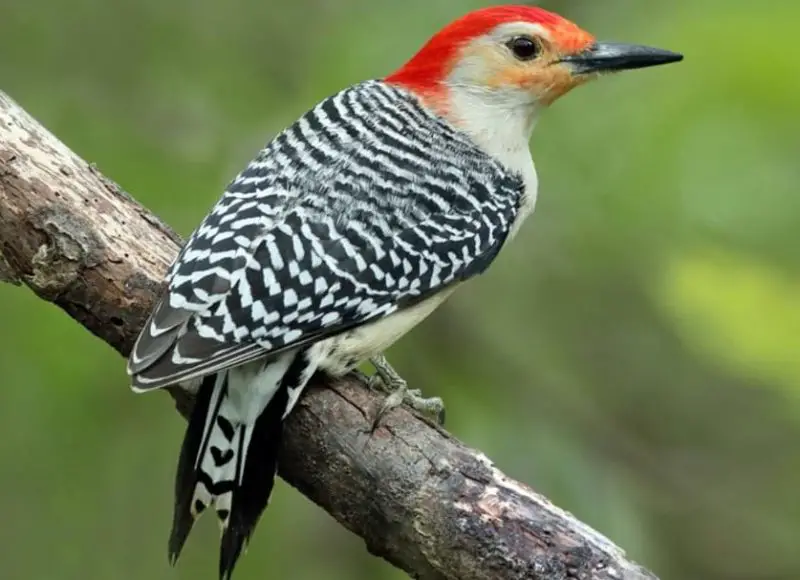
The Red-bellied Woodpecker is a striking bird known for its orange-red crown and nape. Breeding primarily in the eastern United States from Florida to Canada, it features black wings and white stripes on its back, with barred black tail feathers. Its underside is mostly pale yellow or white, with a subtle red hue around the neck.
Unlike the Red-headed Woodpecker, which has a fully red head and neck, this species is distinguished by its distinctive markings. Its diet includes insects like ants and beetles, as well as nuts, fruits, berries, and tree sap.
Yellow-Rumped Warbler
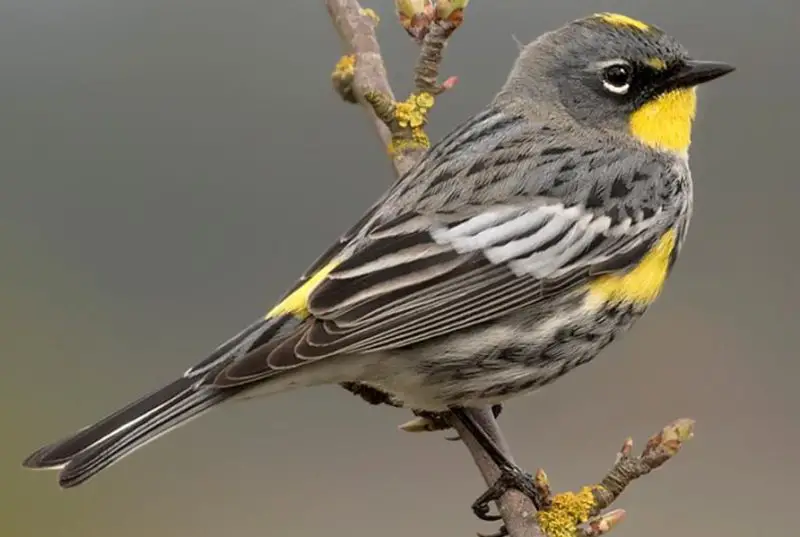
The Yellow-rumped Warbler (Setophaga coronata) is a migratory bird found across North America, from the Pacific and Atlantic coasts to Canada and Central America. It is notable for its yellow patches on the sides of its tail, white underparts, gray back feathers, and distinctive crown stripes.
These warblers migrate south for the winter, feeding on insects and berries. Their strong legs enable them to cling to branches while hunting, making them agile in tree cover. Their vibrant markings and adaptability make them a delightful backyard visitor year-round.
Chipping Sparrow
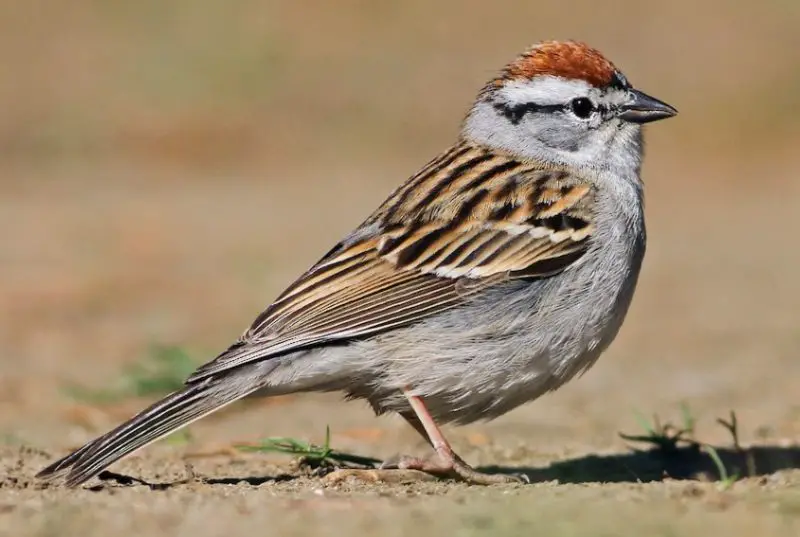
The Chipping Sparrow is a small, widespread passerine bird found across most of North America. It features a grayish-brown upper body with white underparts, a distinctive rufous cap with black stripes, and large eyes framed by light brown feathers.
This species migrates seasonally, with eastern and western subspecies moving to warmer climates for the winter. Chipping Sparrows primarily eat seeds but also consume insects during the breeding season. They thrive in open grasslands, building cup-shaped nests in trees or shrubs, and are known for their cheerful, chip-like song.
American Crow
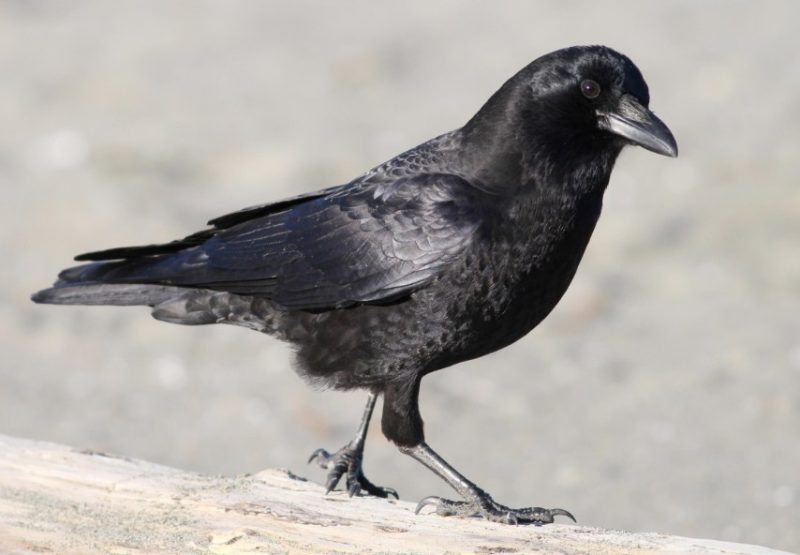
The American Crow is a prominent member of the Corvidae family, found throughout most of North America. It closely resembles the European carrion crow and the Eurasian hooded crow but can be distinguished by its all-black plumage and slightly varied wingspan—17-21 inches for males and 16-19 inches for females.
These crows are versatile feeders, consuming insects like grasshoppers and beetles, as well as grains during the winter. Their distinctive “caw” call is a common sound across open terrain, making them a favorite among birdwatchers.
Brown-Headed Nuthatch
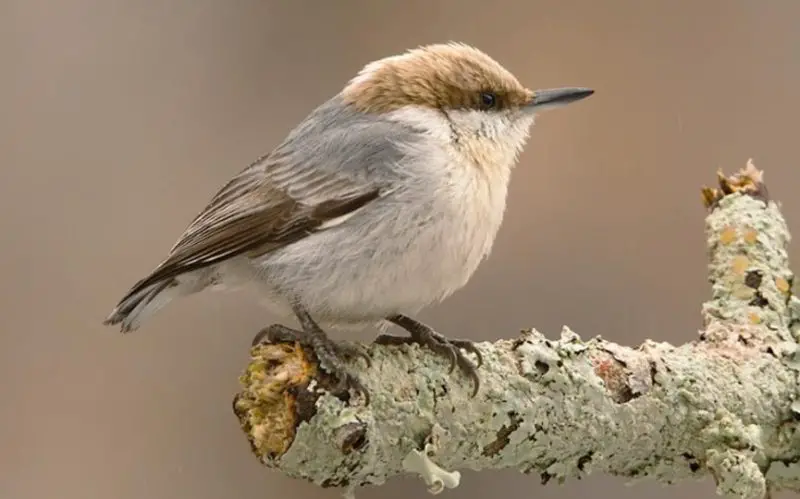
The Brown-headed Nuthatch is a small songbird native to the pine forests of the southeastern United States. Characterized by its brown head and blue-gray body, it is easily recognizable. Recent studies have shown low genetic differentiation between northern and southern populations in Florida, with concerns about reduced genetic diversity in southern Florida due to habitat fragmentation.
An isolated population in the Bahamas faces risks from human activities and hurricanes. Conservation efforts are crucial to protect these birds and ensure their survival for future generations.
Song Sparrow
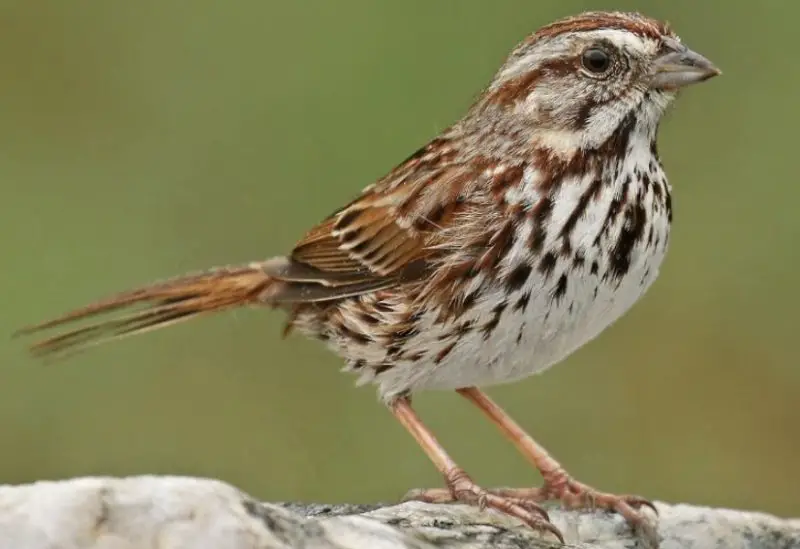
The Song Sparrow (Melospiza melodia) is a small, versatile bird common across North America. Characterized by its brown upperparts with dark streaks and white underparts, it features a distinctive dark brown spot on its chest. Its brown cap and ruffled neck feathers add to its unique appearance.
Adaptable to various habitats, including dry brush, wetlands, and open fields, the Song Sparrow is known for its cheerful singing, even during winter when many other birds are silent.
Pileated Woodpecker
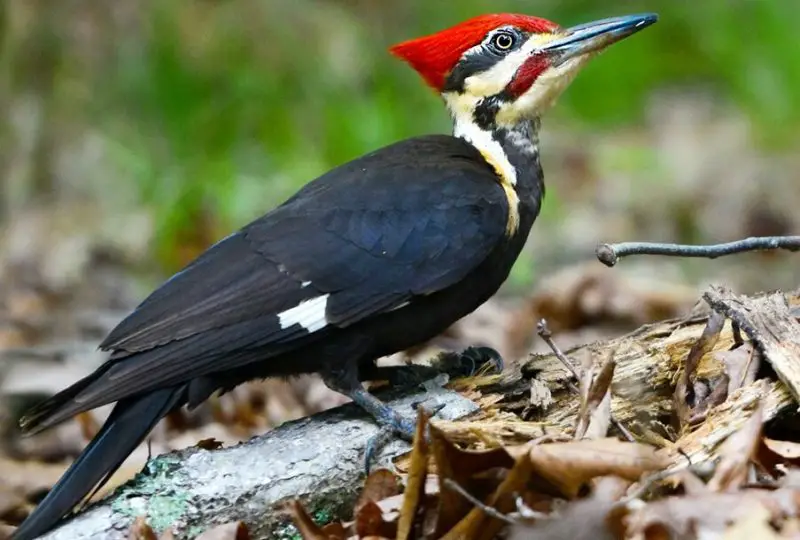
The Pileated Woodpecker (Dryocopus pileatus) is a strikingly large bird native to North America, known for its impressive size and vivid plumage. With its bold black feathers and distinctive red crest, it is easily recognizable in the forest canopy.
Found across eastern North America, the Great Lakes region, Canada’s boreal forests, and parts of the Pacific Coast, it is among the largest woodpeckers in the region. This insectivorous bird is adept at pecking tree trunks to find food and create nest cavities, making it a symbol of beauty and resilience in avian wildlife.
Ruby-Throated Hummingbird

The Ruby-throated Hummingbird (Archilochus colubris) is a vibrant species known for its impressive migration. It winters in Central America, Mexico, and Florida before journeying to Canada and Eastern North America for breeding. As the most common hummingbird east of the Mississippi River, it boasts bright metallic green upperparts, white underparts, and a distinctive red throat patch.
Measuring around 3 inches long, this tiny bird feeds on nectar from flowers and insects like flies or mosquitoes, especially during migration and while raising young.
Northern Cardinal
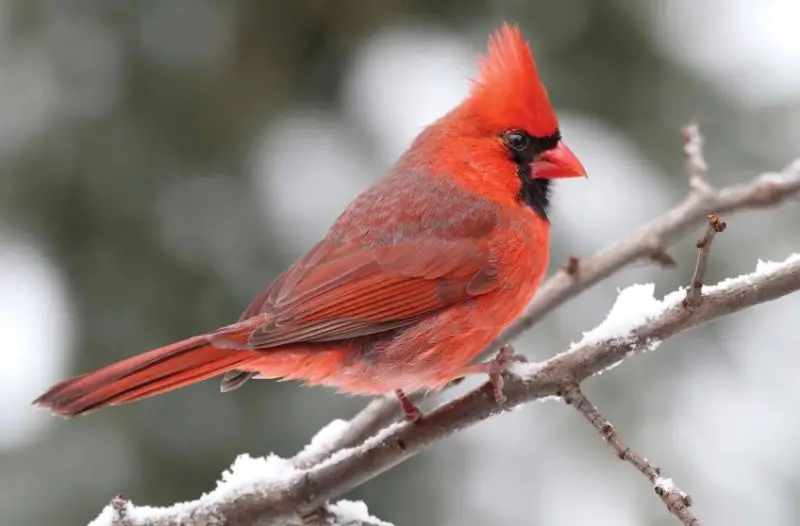
The Northern Cardinal is a striking bird with bright red plumage and a distinctive crest. Found from Maine to Mexico, it’s easily recognized by its vivid colors and black facial markings. Measuring 7-9 inches, males are known for their persistent singing in spring to attract mates.
They eat insects, seeds, and fruits, and are common at backyard feeders. Females are less bright but still notable for their warm brownish-red feathers. Cardinals form lifelong pairs and can often be seen together in gardens and parks.
Blue Jay
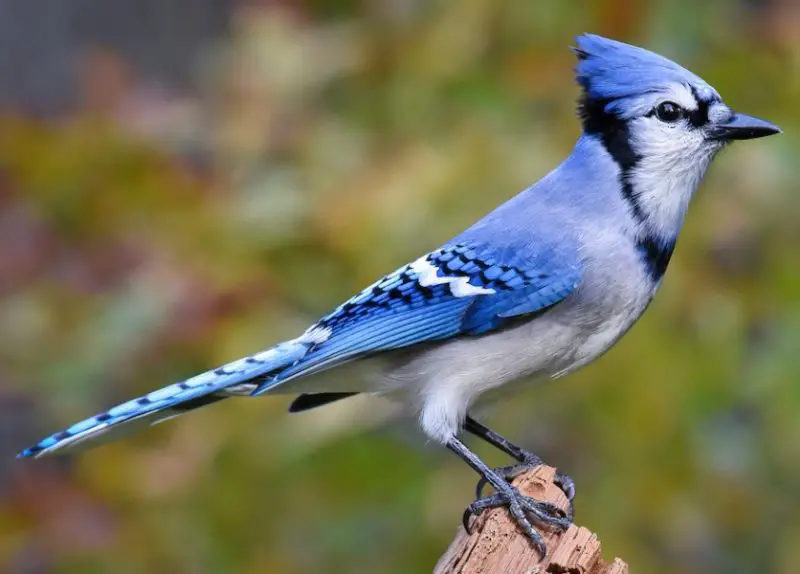
The Blue Jay, native to the eastern and central United States and Newfoundland, Canada, is renowned for its vibrant blue plumage with striking white markings. This adaptable bird thrives in various environments, from deciduous forests to urban areas.
Known for their intelligence, Blue Jays use tools and mimic the calls of other species, like hawks, to defend their territory. Their diet mainly includes insects, seeds, and nuts, but they may also consume small vertebrates. These birds are vital to ecosystems, aiding in pollination and seed dispersal.
House Finch
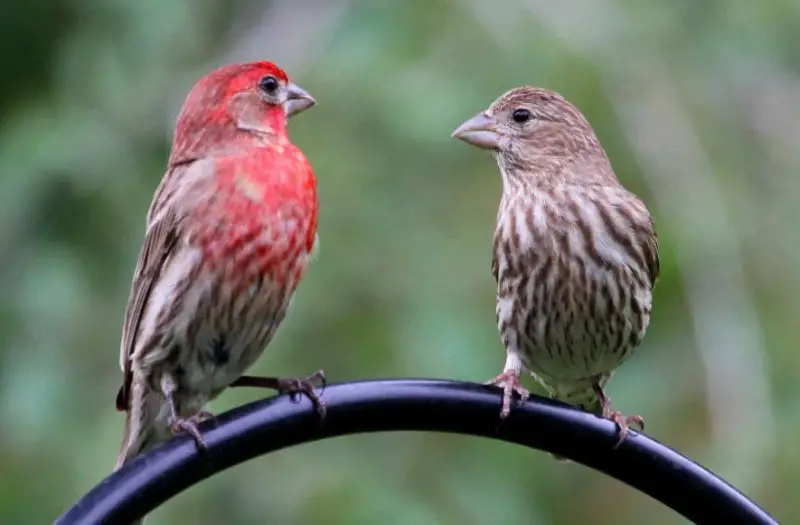
The House Finch, native to western North America and introduced to the eastern U.S. and Hawaii, is a common and colorful bird. Measuring 5-6 inches in length with a wingspan of 8-10 inches, it has brown upperparts and underparts that range from pale grayish white to yellow.
Males are distinguished by their brighter plumage and reddish facial streaks, a result of sexual dimorphism. These adaptable birds are often found around human habitats like farms and gardens, feeding on grains, fruits, and insects.
American Robin
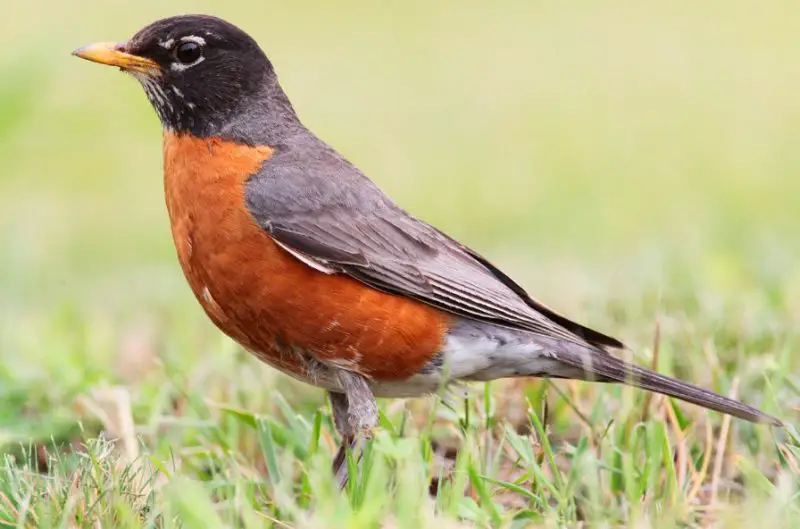
The American Robin is a migratory bird in the thrush family, Turdidae. Known for its reddish-orange breast, similar to its European namesake, it has gray upperparts and white underparts that transition from yellow on the throat to orange on the belly.
This species is found throughout North America in winter and breeds in Mexico and Central America. Robins primarily feed on fruits and insects, playing a crucial role in ecosystems by dispersing seeds.
Brown Thrasher
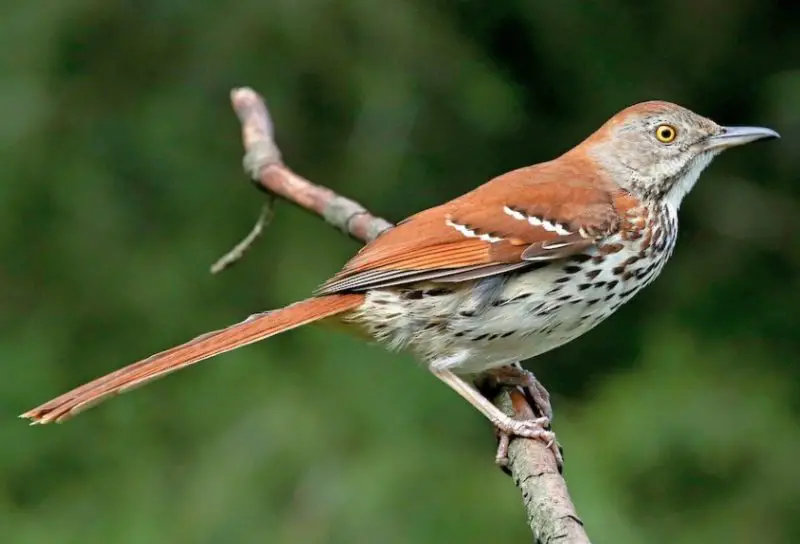
The Brown Thrasher, a member of the Mimidae family, is found across eastern and central North America, excluding areas west of the Rockies and Central Texas. It features reddish-brown back feathers, a white underbelly, and a long tail that trails behind it while foraging on the ground for insects, fruits, and berries.
Renowned for its complex song of over 2,000 notes, this bird often builds nests near human activity, making it a favorite among birdwatchers.
American Goldfinch
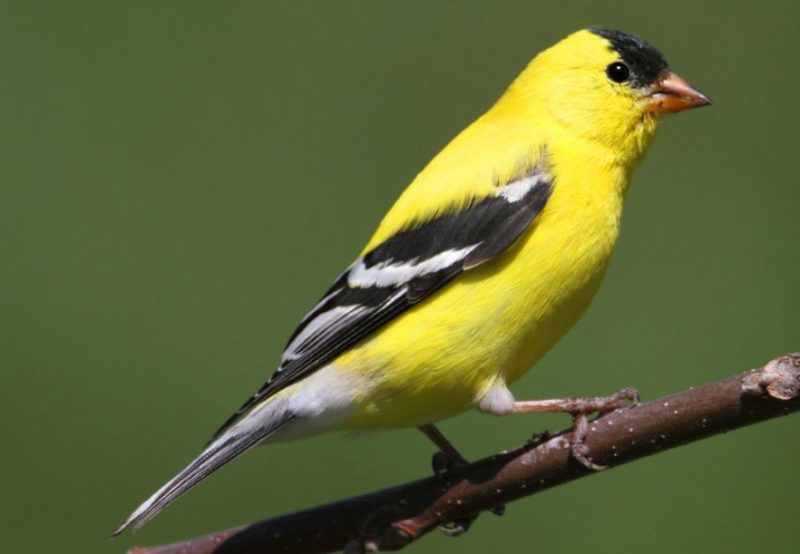
The American Goldfinch is a small, vibrant North American finch. Males are bright yellow with black wings and tails, while females are more subdued in color. They migrate from mid-Alberta to North Carolina during breeding season and travel to Mexico for winter.
Unique among finches, they undergo a complete molt each year and exhibit sexual dichromatism, with males showcasing brighter colors. Their diet primarily consists of seeds, though they also consume insects like aphids and caterpillars. Their distinctive chirps and trills make them easily recognizable.
Downy Woodpecker
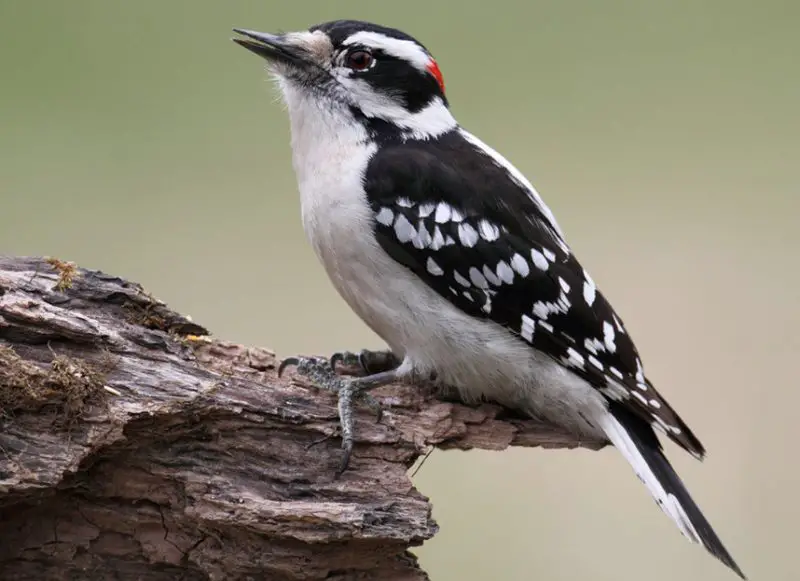
The Downy Woodpecker is a small North American woodpecker, reaching up to 7 inches in length. It features a white belly and spotted wings, making it easily recognizable. Inhabiting forests across the United States and Canada, except for deserts and northern tundra, it nests in tree cavities.
The Downy Woodpecker primarily feeds on insects but will also eat fruit or nuts. Its call, a distinctive ‘pik-er,’ is similar to other woodpeckers like the Hairy Woodpecker.
Red-Winged Blackbird
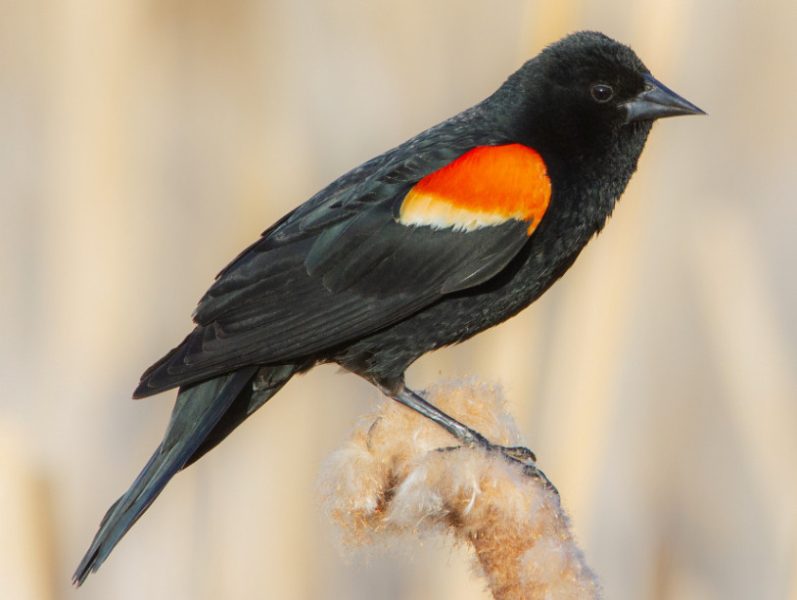
The Red-winged Blackbird is a striking bird common throughout North and Central America. Its glossy black body is highlighted by bright red and white wing patches, making it easily recognizable. Preferring wetland habitats such as marshes and lakeshores, it nests in grassy areas near water during breeding season and migrates south for the winter.
Primarily insectivorous, it also eats wild fruits and grains. Social birds form large flocks during migration, and their distinctive “conk-la-ree” call is a familiar sound in the skies.
White-Throated Sparrow
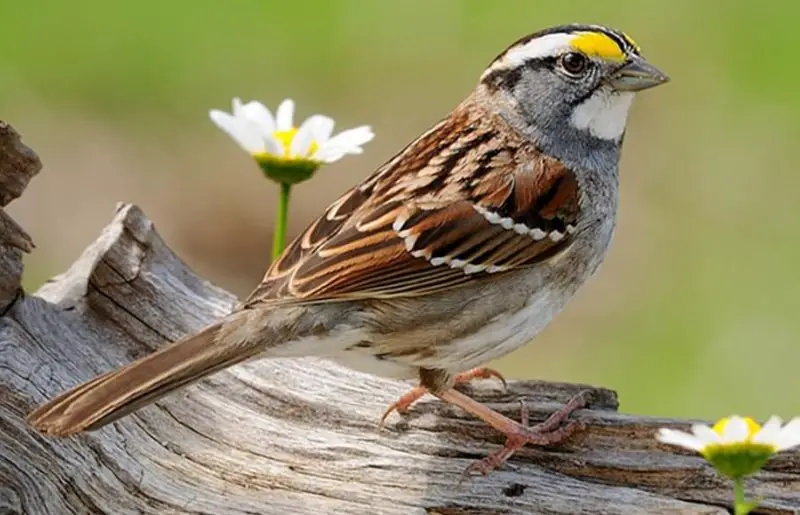
The White-throated Sparrow is a small passerine bird recognized by its distinctive yellow and black head stripes, white throat, and chest, with a grey back and wings. Its scientific name, Zonotrichia albicollis, combines Ancient Greek and Latin to describe its striped crown and white neck.
In North America, it inhabits wooded areas like coniferous and deciduous forests, feeding on insects in summer and seeds in winter. Nesting close to the ground with grasses and moss, these sparrows are often solitary but form flocks during their fall migration.
Red-Headed Woodpecker
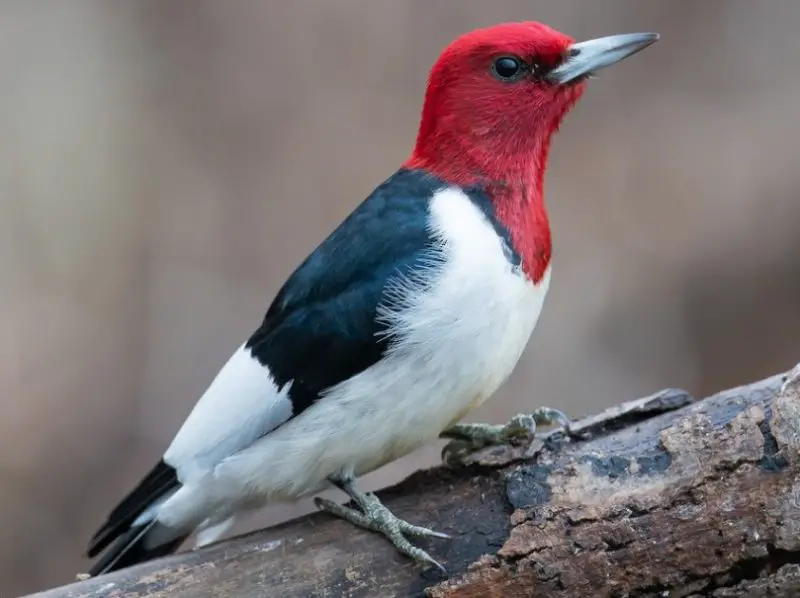
The Red-headed Woodpecker is a striking bird found in temperate North America, characterized by its vibrant red head and neck, contrasted with a black and white body. Its rounded wings enhance maneuverability, aiding in food and shelter searches. Breeding mainly occurs in open fields across Canada and the eastern United States.
Despite threats like deforestation and collisions, conservation efforts have helped stabilize its population. Currently listed as least concern on the IUCN Red List, this species benefits from ongoing protection efforts and habitat conservation.
Barn Owl
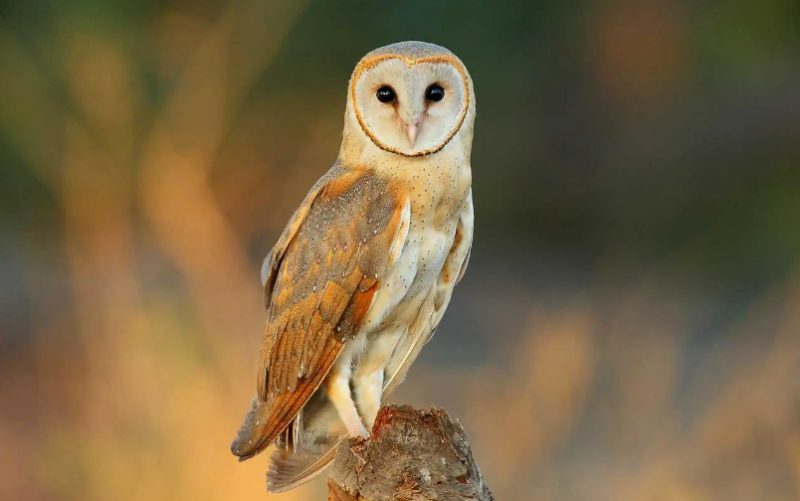
Barn owls are striking nocturnal birds found globally, except in polar and desert regions, most of Indonesia, and some Pacific Islands. Their large eyes, thin legs, and long wings are adapted for silent hunting in low-light conditions. Their white plumage provides effective camouflage, aiding in the capture of prey.
Utilizing their acute hearing and vision, barn owls detect and hunt rodents and insects, playing a crucial role in controlling rodent populations. Protecting barn owls is essential for maintaining ecological balance and ensuring their vital contributions to ecosystems.
Ruby-Crowned Kinglet

The Ruby-crowned Kinglet is a small, energetic passerine bird native to North America. With its olive-green plumage, white wing bars, and distinctive red crown patch on males, it stands out in the avian world. Juveniles closely resemble adults but are smaller and lack the red crown.
Typically found in coniferous forests or woodlands, these birds diligently forage for insects among the foliage. Their remarkable stamina enables them to migrate long distances with minimal fatigue, showcasing their resilience and adaptability in the natural world.
Great Horned Owl
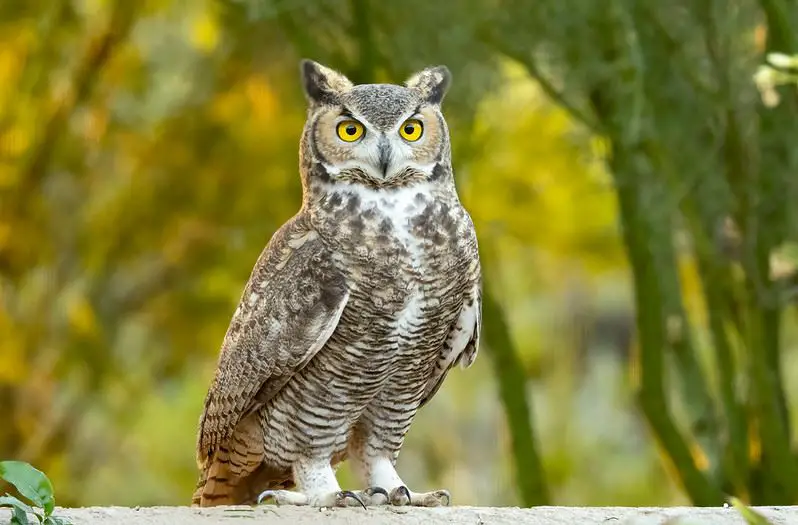
The Great Horned Owl (Bubo virginianus) is a formidable bird of prey native to the Americas, renowned for its wide range and adaptability across various habitats. This owl primarily hunts rabbits, hares, rats, and mice, but will also prey on skunks, geese, and other birds.
Its powerful talons can easily crush prey, and its distinctive horn-like tufts add to its intimidating appearance. With its impressive strength and striking features, the Great Horned Owl stands out as one of the most iconic and fearsome owls in North America.
Scarlet Tanager
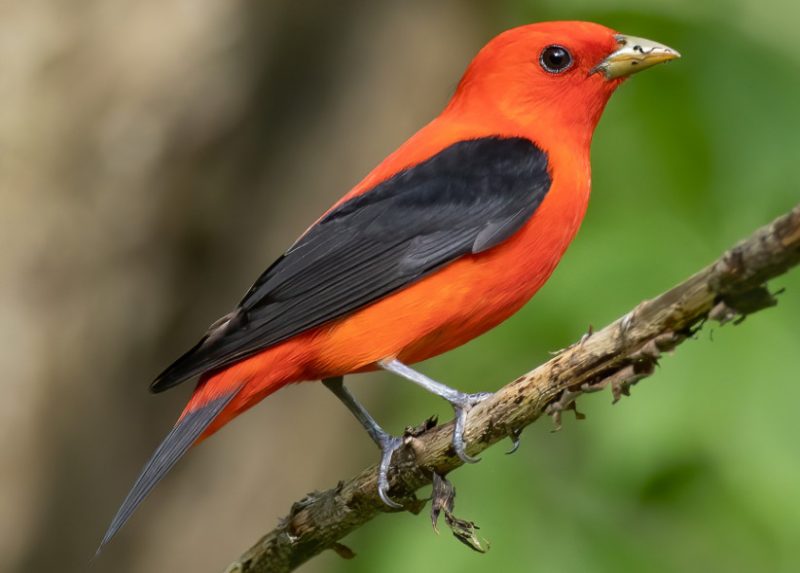
The Scarlet Tanager (Piranga olivacea) is a striking medium-sized bird found in North and South America, belonging to the Cardinal family. Known for its vivid red plumage contrasting with black wings and tail feathers, it has a distinctive song with high whistles that descend in pitch.
This species primarily feeds on insects and berries and may form loose flocks while foraging during the breeding season. Highly territorial, Scarlet Tanagers defend their nests from predators like cats and squirrels between April and June.
Belted Kingfisher
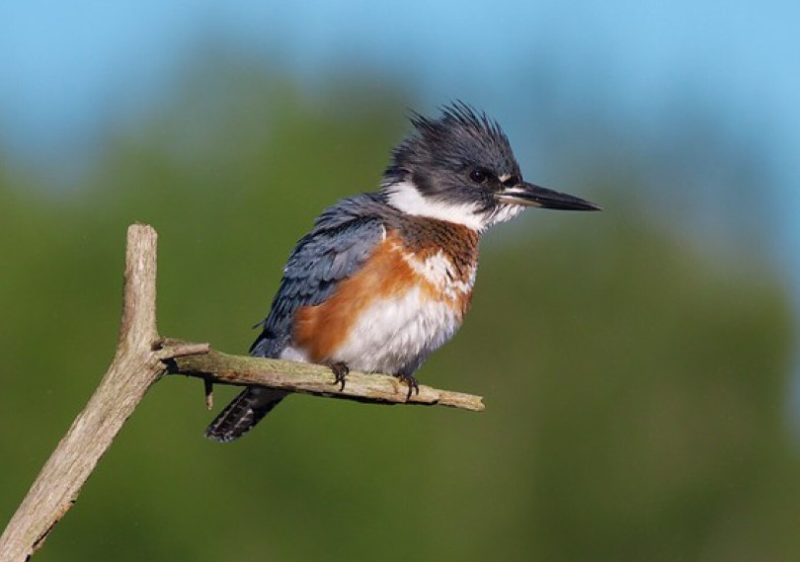
The Belted Kingfisher (Megaceryle alcyon) is a striking large bird native to North America, classified under the family Alcedinidae. First described by Carl Linnaeus in 1758, this species is noted for its distinctive plumage—males have a bright blue top with a white underside, while females display rusty brown backs and wings with a black breast band.
Known for its loud, distinctive call, the Belted Kingfisher primarily feeds on small fish but also consumes crustaceans, insects, and amphibians. Its impressive hunting skills and vibrant appearance make it a remarkable bird.
Cooper’s Hawk
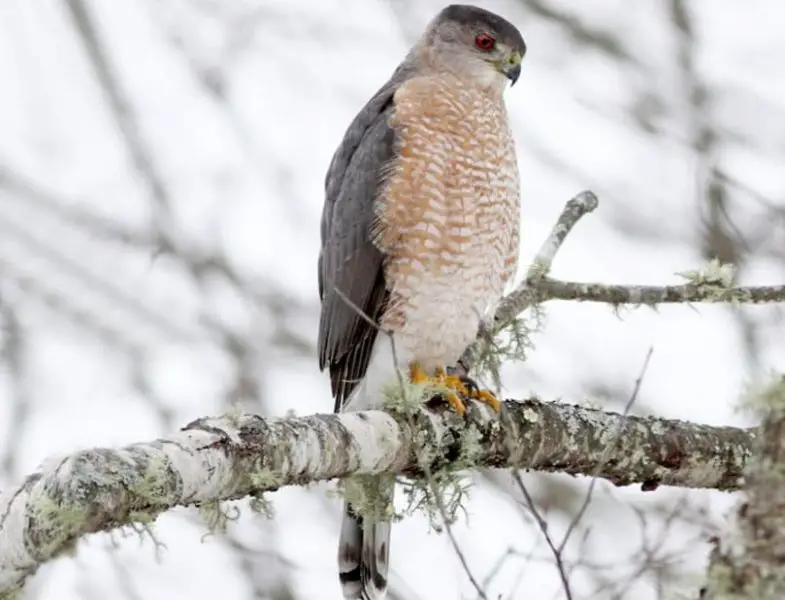
The Cooper’s Hawk (Accipiter cooperii) is a medium-sized raptor native to North America, distinguished by its agility and ability to navigate through dense wooded areas. Part of the Accipiter genus, Cooper’s Hawks have rounded wings and short tails that enable quick maneuvers while hunting small rodents and birds.
Their powerful feet are equipped with sharp talons for capturing prey both on the ground and in midair. Adults exhibit barred upperparts that range from grayish brown to dark chestnut, with rusty underparts streaked with white.
Gray Catbird
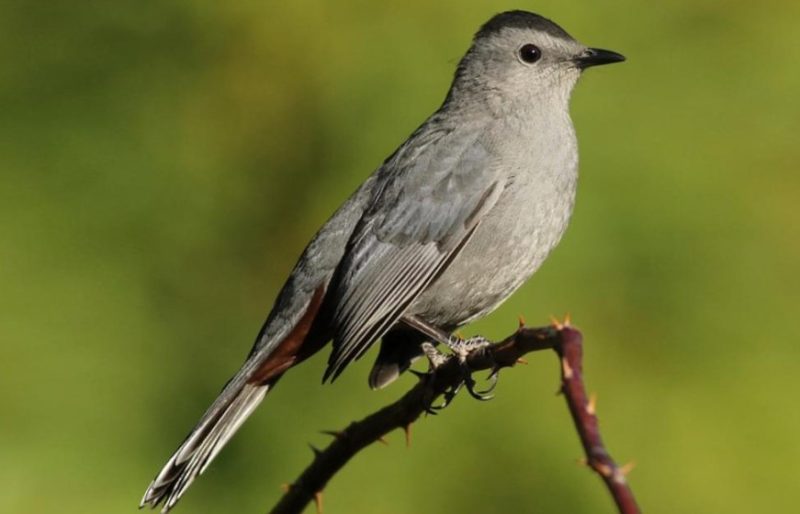
The Gray Catbird (Dumetella carolinensis) is a medium-sized bird native to North and Central America, and the sole member of its genus, Dumetella. Its plumage is primarily gray with brownish tones on the back and lighter gray underneath. A distinctive feature is its white tail feathers, which it flicks in a manner reminiscent of a cat’s tail, hence the name.
Omnivorous by nature, it feeds on insects like caterpillars and beetles, as well as fruits such as berries and cherries. Gray Catbirds are often solitary or in pairs but may form flocks for protection against predators.
Hooded Warbler
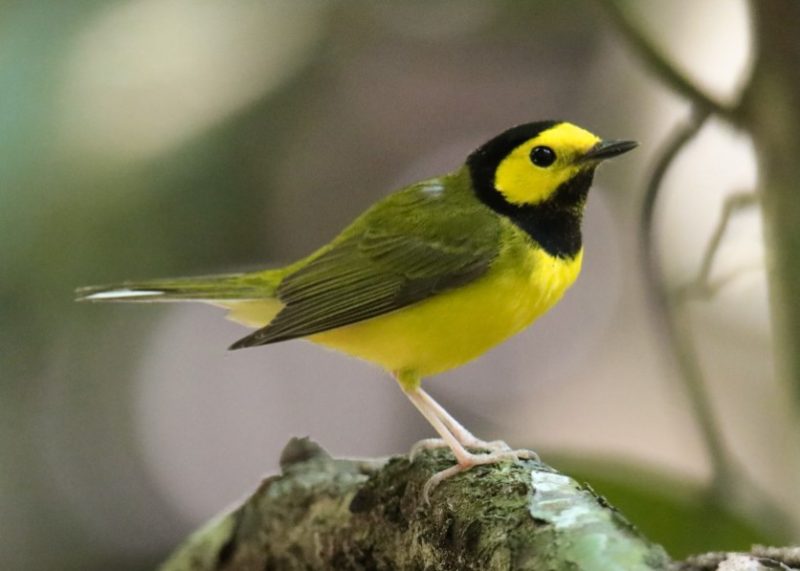
The Hooded Warbler (Setophaga citrina) is a New World warbler that breeds in eastern North America and migrates to Central America and the West Indies for the winter. It is easily recognized by its striking yellow, hood-like markings on its head. Historically classified as Wilsonia citrina, it remains one of the long-known species in avian research.
Preferring moist woodlands, the Hooded Warbler primarily feeds on insects like caterpillars and grasshoppers but also consumes fruits such as wild cherries during migration. This bird plays a crucial role in ecosystem health, though climate change poses a threat to its survival.
Osprey
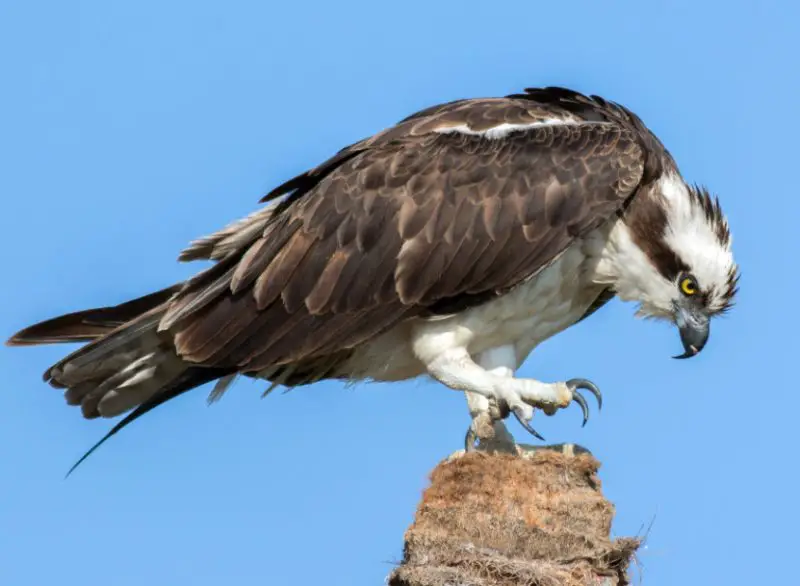
The Osprey is a magnificent bird of prey renowned for its wide-ranging habitat. With distinctive brown upperparts and a greyish head and underparts, it is easily recognized soaring across various regions.
This large raptor, with a wingspan up to 180 cm (71 in) and a body length of 60 cm (24 in), primarily hunts fish, gliding over rivers and coasts in search of its next meal. Adaptable to diverse environments, from water sources to mountainsides, the Osprey exemplifies resilience and majesty in the avian world.
Common Grackle
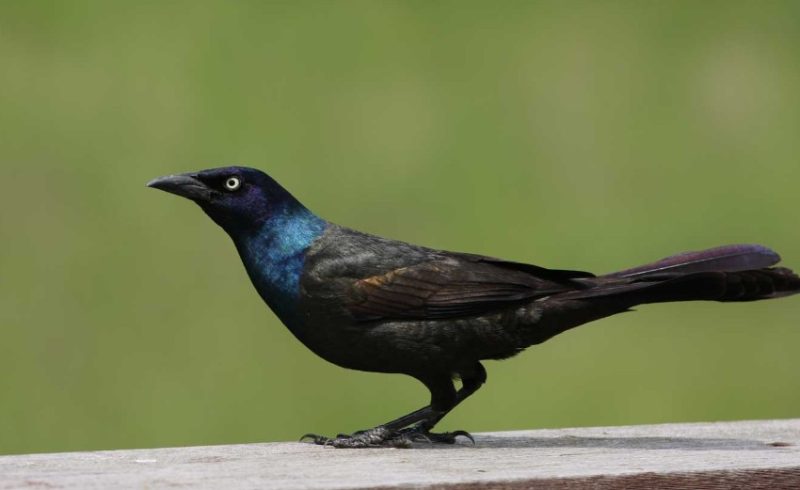
The Common Grackle is a large bird native to North America, easily recognizable by its iridescent head, pale yellow eyes, and long dark bill. Males exhibit more vivid colors compared to females. Found in a variety of habitats, including fields, forests, wetlands, and urban areas, these birds form large flocks to forage for food like grains and insects.
They are also known to scavenge from human sources such as garbage dumps or picnic tables. With their striking plumage and distinctive call, Common Grackles are a notable presence in birdwatching.
Brown-Headed Cowbird
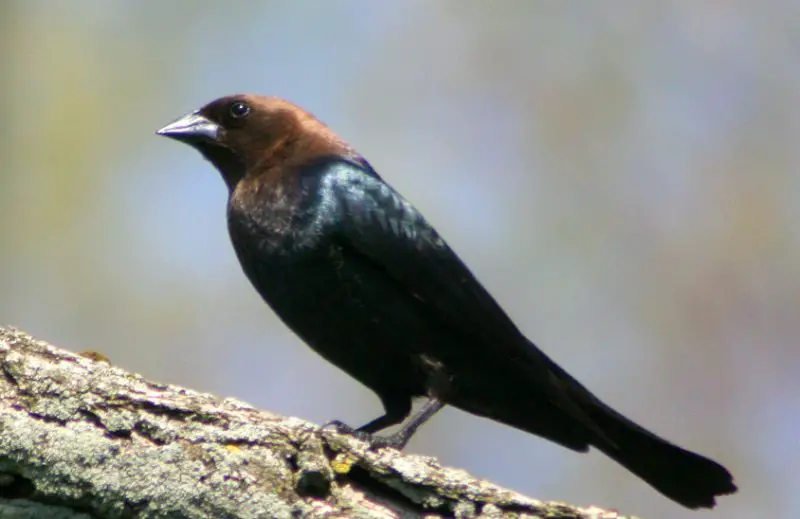
The Brown-headed Cowbird is easily recognized by its distinct brown head and contrasting glossy black body. Males exhibit this striking coloration, while females are more subdued with grayish-brown tones.
This small bird is a notorious brood parasite, laying its eggs in the nests of other bird species. Look for them in open habitats like grasslands and agricultural fields across North America. Their call is a series of high-pitched whistles and gurgles.
Common Starling
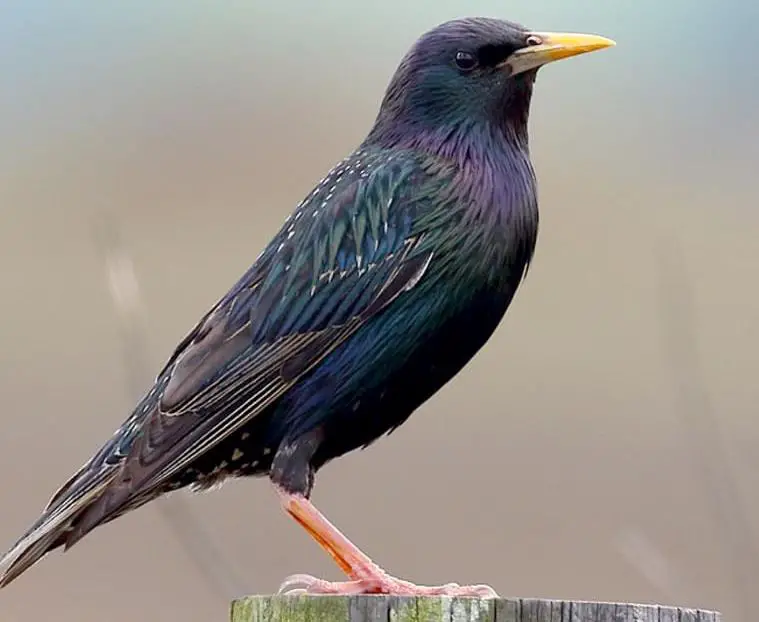
The Common Starling is a medium-sized bird known for its glossy black plumage with a metallic sheen, often speckled with white. Its beak and legs change color with the seasons, typically pink or black. Measuring about 8 inches in length, this adaptable bird feeds on insects, fruits, seeds, and human food waste.
Common Starlings live in large flocks and are highly territorial during breeding seasons. They are widespread across Europe, thriving in various habitats.
Indigo Bunting
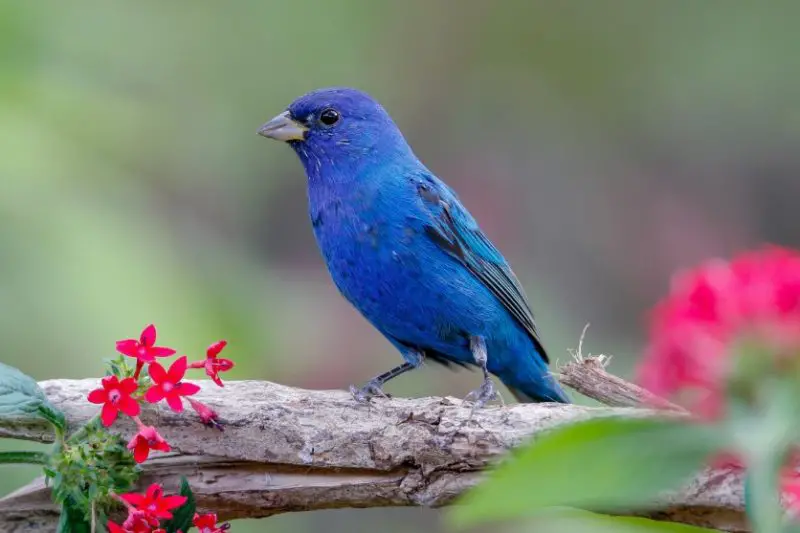
The Indigo Bunting is a small, vibrant bird belonging to the cardinal family, known for its striking bright blue plumage. This eye-catching color is most vivid during the breeding season, when males are easily spotted in open woodlands, farmland, and brush areas across North America.
In winter, they migrate to Central and Northern South America, navigating by the stars. Feeding mainly on insects and seeds, these agile birds often forage near the ground. Their presence adds a splash of color to any natural landscape.
Eastern Phoebe

The Eastern Phoebe is a small passerine bird from the Tyrannidae family, recognized for its grayish-brown upperparts and pale underparts. Measuring up to 16 cm in length with a wingspan of 25–30 cm, this bird is often found near streams, woodlands, and open fields.
It feeds on insects like flies and bees, which it catches midair or by sallying from perches. The Eastern Phoebe builds shallow, cup-shaped nests from grasses and mud, often on cliffs, bridges, or buildings.
Purple Finch
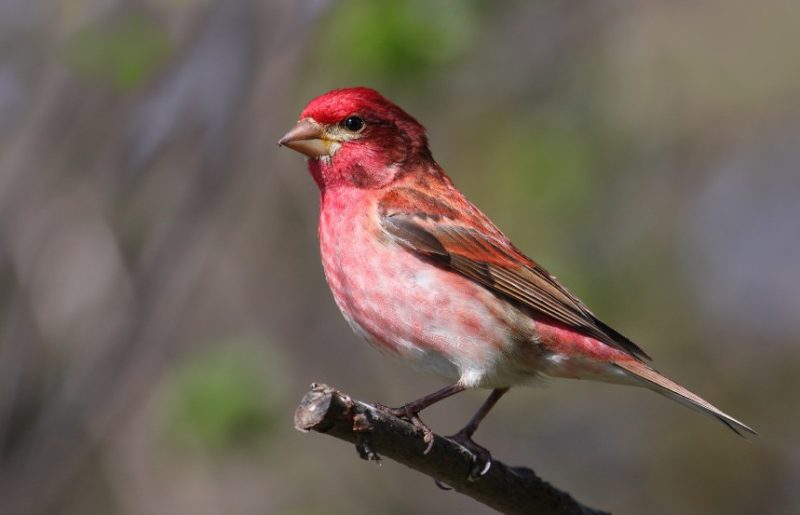
The Purple Finch (Haemorhous purpureus) is a small North American songbird known for its vibrant pinkish-purple plumage, especially on the males. Measuring about 5-6 inches in length, these finches have a stout body and a conical beak suited for seed and insect consumption.
They are commonly found in forests and have adapted well to human-altered environments. Despite challenges like habitat loss, the Purple Finch remains a resilient species throughout its range.
Cyanocitta
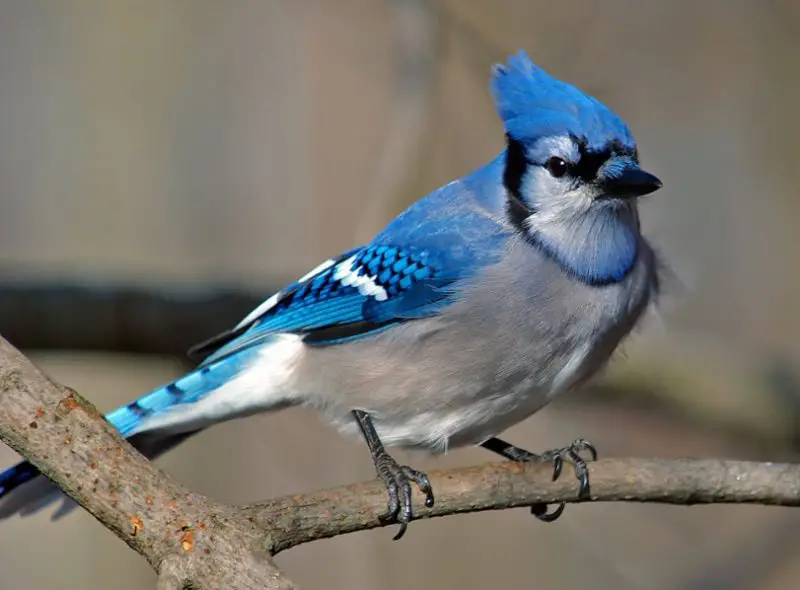
Cyanocitta is a genus of birds in the Corvidae family, which includes jays, crows, and magpies. Established in 1845, this genus includes species like the Blue Jay and Steller’s Jay. The name Cyanocitta derives from Greek, meaning “dark blue jay,” reflecting their striking blue plumage.
Known for their intelligence, these birds can solve complex problems and even mimic human voices, showcasing their remarkable cognitive abilities. Cyanocittas are also highly adaptable, thriving in various environments.
Loggerhead Shrike
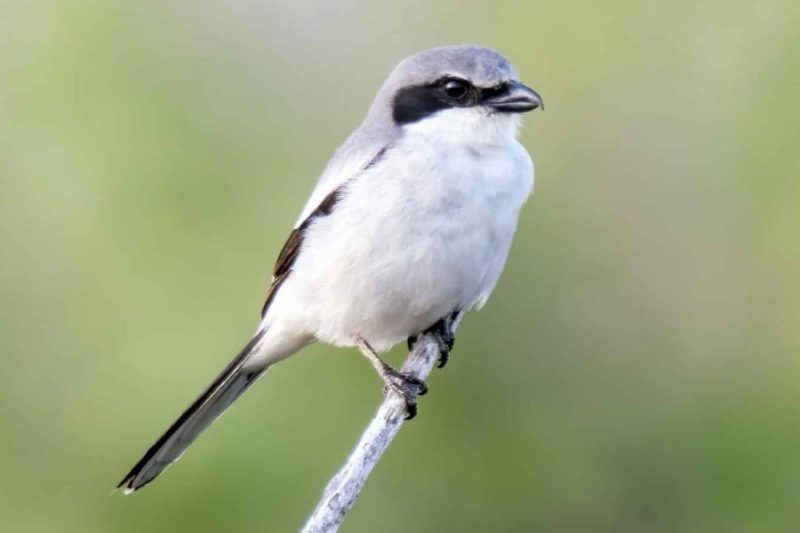
The Loggerhead Shrike (Lanius ludovicianus) is a carnivorous bird native to North America, often called the “butcherbird” for its habit of impaling prey like insects, lizards, and small mammals on thorns.
This medium-sized bird features a distinctive black mask, gray wings with white patches, and a black back with star-like white spots. Perched on elevated spots, it surveys the ground for food. With a declining population, conservation efforts are crucial for its survival.
Shrike

Shrikes are small, predatory songbirds in the Laniidae family, comprising 34 species across four genera. Known as “butcherbirds” for their habit of impaling prey on thorns or barbed wire, they hunt a wide range of animals, including insects, small reptiles, and even other birds.
Shrikes are recognized for their sharp, hooked bills and bold plumage, often in gray, black, or brown tones. Their name originates from the Old English “scrīc,” reflecting their shrill calls.
Eastern Screech Owl
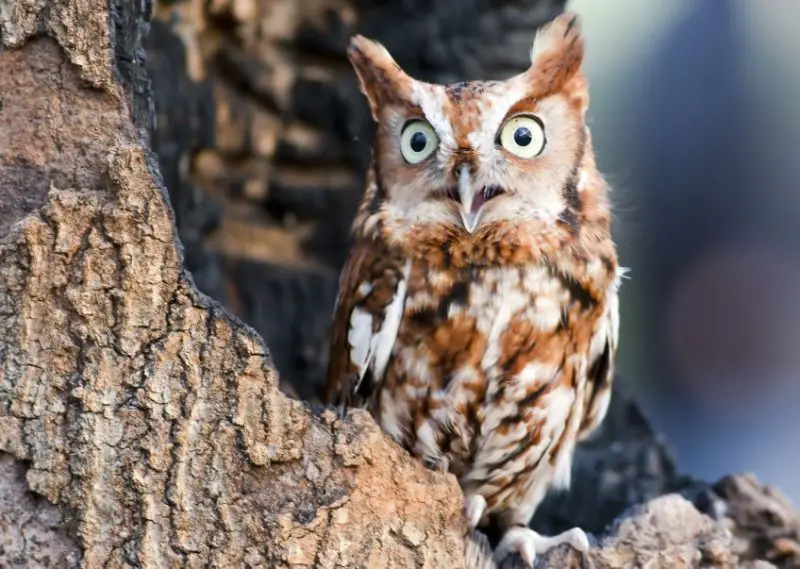
The Eastern Screech Owl (Megascops asio) is a small, nocturnal owl native to wooded areas across Eastern North America. Adaptable to human environments, this owl is common in both rural and suburban settings. Its distinctive call resembles a horse’s whinny or a trilling sound.
The owl’s plumage varies from gray to reddish-brown, providing excellent camouflage. Feeding on insects, mice, and small reptiles, it hunts primarily at night. Despite its proximity to humans, the Eastern Screech Owl remains elusive.
Grebes
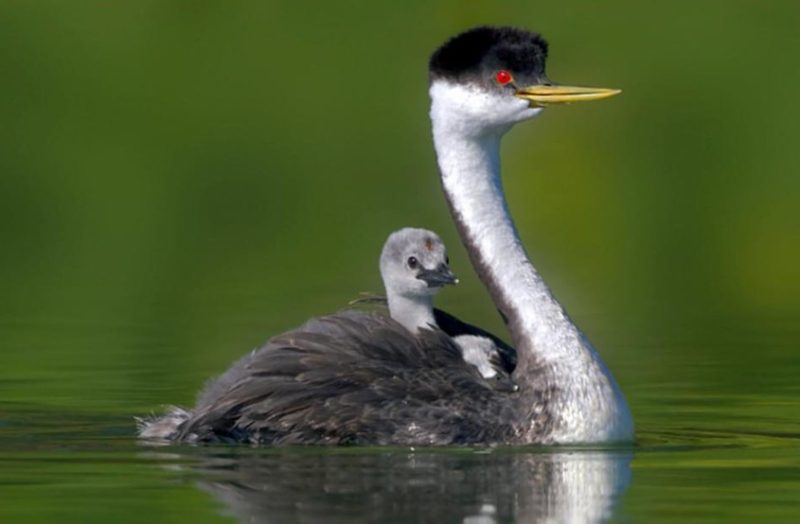
Grebes are aquatic diving birds belonging to the order Podicipediformes, with 22 species spread across six genera. Found primarily in freshwater habitats worldwide, some species migrate to marine environments during winter.
Grebes range in size from 4 to 32 inches and can weigh between 8 and 30 ounces, depending on the species. Their plumage varies from black, brown, and gray to brighter colors like yellows, blues, and greens, aiding in their streamlined swimming. Some species are even flightless on stable lakes.
Red-Tailed Hawk
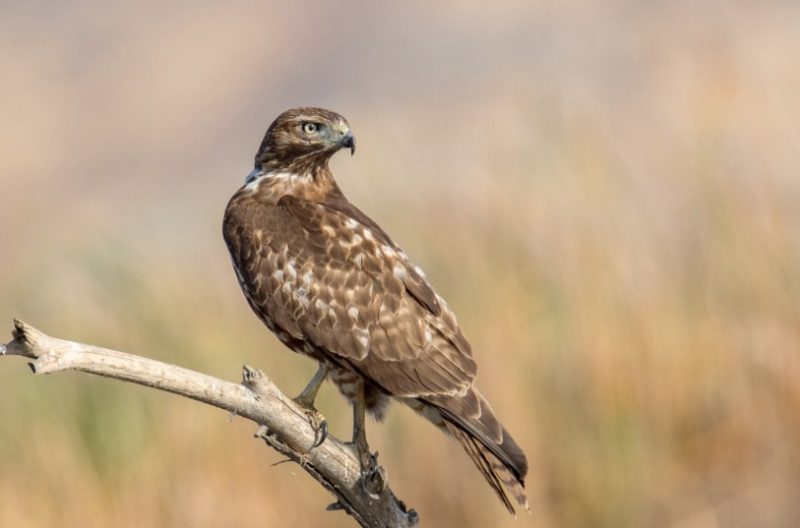
The Red-tailed Hawk (Buteo jamaicensis) is a prominent bird of prey recognized by its distinctive red tail. Inhabiting a vast range across North America—from Alaska to Panama and the West Indies—this species is one of the most prevalent raptors.
Preferring open habitats like fields and grasslands, they primarily hunt small mammals such as rabbits and squirrels but also consume reptiles and birds. Their nests, often built high in trees, are used year-round unless disturbed. The Red-tailed Hawk has become a cherished symbol of American wildlife due to its frequent presence in urban and rural areas.
Wood Stork
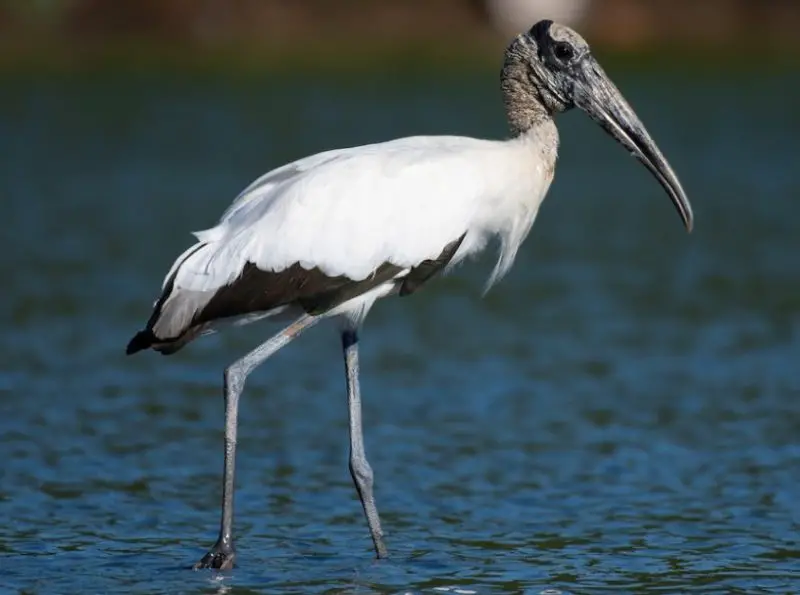
The Wood Stork (Mycteria americana) is a large wading bird found in subtropical and tropical regions across the Americas, including the Caribbean. Recognizable by its white head and neck feathers, it boasts a wingspan of up to 6 feet, making it one of North America’s largest birds.
Wood Storks are commonly seen near swamps and wetlands, where they hunt for fish, crabs, frogs, and small reptiles. They are notable for their annual breeding in North America, often nesting on platforms created by humans or other animals near water bodies.

